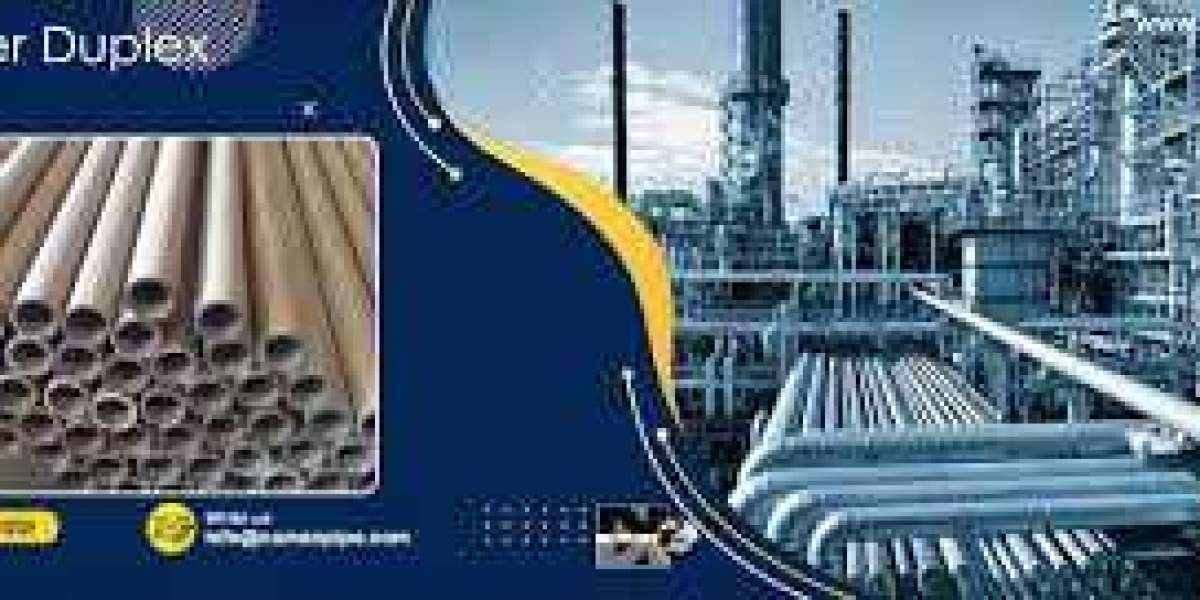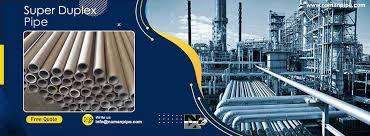Super duplex plates, a unique subtype of composite stainless steel plates, boast a multitude of metal constituents. These plates, renowned for their exceptional corrosion resistance, are well-suited for harsh environments. In this blog post, we delve into the distinct characteristics of super duplex pipe that have earned them a top spot in industrial applications. So, to know more about the same, continue reading the article.
Types of duplex flanges
Here are some of the significant types of duplex flanges:
Lean Duplex: Lean duplex stainless steels are duplex stainless steels created with reduced levels of costly alloying elements, such as nickel and molybdenum. Yet they retain solid corrosion resistance and greater strength than traditional austenitic stainless steels, making them a cheaper choice for specific uses.
Standard Duplex: Standard duplex stainless steels are a category of stainless steels with a dual-phase microstructure of a similar ratio of ferrite and austenite.
Super Duplex: A subset of stainless steels, super duplex demonstrates increased corrosion resistance and mechanical strength. Their alloy content is elevated, especially in chromium, molybdenum, and nitrogen.
What is the function of nitrogen in duplex stainless steel?
Nitrogen is crucial in the formation of duplex stainless steel alloys. Nitrogen offers advantages in four main areas:
Austenite Stabilization: Nitrogen in duplex stainless steel stabilizes the austenite phase. Compared to using only ferrite, adding this phase enhances strength, toughness, and resistance to corrosion.
Resist Corrosion: Nitrogen improves the ability of duplex stainless steels to resist different types of corrosion, including pitting and crevice corrosion. Nitrogen encourages the development of the well-known protective film on the surface of stainless steel, allowing it to resist damage from corrosive surroundings.
Strength: Nitrogen enhances the alloy's matrix through solid solution strengthening, boosting the mechanical features of duplex stainless steels. It improves the material's ability to withstand forces and impacts, making it ideal for challenging structural uses.
Affordable Additions: Nitrogen alloying provides a cost-effective option for enhancing the alloy's performance compared to other elements such as nickel or molybdenum. It permits metalworks to produce alloys with preferred characteristics without drastically inflating the cost of materials.
Benefits of using the duplex pipe
Great power and long-lasting quality
An essential benefit of duplex piping is its superior strength and long-lasting nature. Duplex pipes are significantly more potent than typical stainless steel pipes, making them an excellent option for situations where pipe strength is vital. They are also highly durable and can endure tough conditions, making them perfect for the chemical, petrochemical, and pharmaceutical industries.
High level of ease in welding
Another essential benefit of duplex pipe is its outstanding ability to be welded easily. The substance can be fused using different techniques, such as gas tungsten arc welding (GTAW), gas metal arc welding (GMAW), and shielded metal arc welding (SMAW). This makes it relatively easy to handle and is a perfect option for welding projects involving piping.
Excellent heat conductivity
The duplex pipe also provides excellent thermal conductivity, effectively moving heat from one place to another. This characteristic makes it particularly valuable in heat exchanger tasks, where effective heat transfer is essential. In addition, thermal conductivity improves heat absorption in settings like cooling systems.
Enhanced efficiency
Due to its distinct properties, duplex piping performs better than conventional piping in various industrial settings. The material's strength, longevity, and resistance to corrosion significantly reduce the need for downtime, repair expenses, and part replacement.








